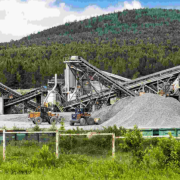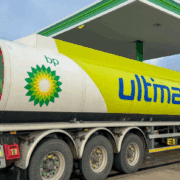⚠️ IMPORTANT LEGAL DISCLAIMER:
The information provided on this page is for general informational purposes only and does not constitute legal, financial, or investment advice. Oil and gas laws, mineral rights regulations, and royalty structures vary significantly by state and jurisdiction. While we strive to provide accurate and up-to-date information, no guarantee is made to that effect, and laws may have changed since publication.
You should consult with a licensed attorney specializing in oil and gas law in your jurisdiction, a qualified financial advisor, or other appropriate professionals before making any decisions based on this material. Neither the author nor the publisher assumes any liability for actions taken in reliance upon the information contained herein.
The mineral rights sector, which involves ownership and control over natural resources like oil, gas, and minerals beneath the surface, is a complex and highly valuable component of the global economy. Landowners, corporations, and investors who hold mineral rights have the potential to generate significant returns by leasing or selling those rights to extraction companies. However, the traditional methods for managing and maximizing the value of these assets often fall short in an increasingly data-driven world.
The introduction of advanced analytics into the mineral rights industry offers an unprecedented opportunity to enhance returns by improving decision-making processes, optimizing resource management, and identifying new revenue streams. This article explores the ways in which advanced analytics is transforming the management of mineral rights and boosting profitability for stakeholders.
Understanding Mineral Rights and Their Value for Enhancing Returns
Mineral rights refer to the ownership of subsurface resources, such as oil, gas, coal, and other minerals. In many jurisdictions, landowners can own both the surface rights (the land itself) and the mineral rights beneath the land. However, these two sets of rights can be separated, allowing one party to own the land while another owns the resources underground.
The value of mineral rights depends on various factors, including the type of resource, market conditions, the location of the resource, and the potential yield of the resource deposit. Traditionally, landowners and investors have relied on geological surveys, market trends, and basic financial models to estimate the value of their mineral rights and determine how to manage them. However, these traditional approaches often leave money on the table by failing to account for the full spectrum of variables that can influence the profitability of mineral rights.
Advanced analytics, which involves the use of big data, machine learning, and predictive modeling, offers a way to address these shortcomings. By analyzing large datasets and identifying patterns that are not immediately obvious through conventional methods, advanced analytics provides deeper insights into the factors that influence mineral rights value and helps stakeholders make more informed decisions.
The Role of Advanced Analytics in the Mineral Rights Industry
Advanced analytics encompasses a wide range of tools and techniques that can be applied to enhance the management of mineral rights. These include predictive modeling, machine learning algorithms, spatial analysis, and data visualization, all of which can be used to optimize decision-making and improve financial returns.
By leveraging data from various sources—such as geological surveys, market data, environmental reports, and historical production records—advanced analytics can provide a more accurate and comprehensive picture of the value of mineral rights. This data-driven approach allows mineral rights holders to make better decisions about when to lease or sell their rights, how to negotiate royalty agreements, and how to manage their assets for maximum profitability.
Additionally, advanced analytics can be used to monitor the performance of extraction companies, ensuring that royalty payments are accurate and that resource production is optimized. This is especially important in cases where mineral rights holders receive ongoing royalties based on production levels.
Optimizing Resource Exploration and Extraction (Enhancing Returns)
One of the most significant ways in which advanced analytics enhances returns from mineral rights is by optimizing the exploration and extraction processes. Traditionally, resource exploration has been a time-consuming and costly endeavor, with geologists and engineers relying on limited data to identify promising drilling or mining sites. This often led to inefficiencies, with companies investing resources in areas that ultimately yielded little or no return.
Advanced analytics changes this by enabling more accurate predictions about the location and quality of resource deposits. Machine learning algorithms can analyze geological data to identify patterns that indicate the presence of valuable minerals, oil, or gas. These algorithms can process vast amounts of data, including satellite imagery, seismic data, and historical drilling records, to pinpoint the most promising areas for exploration.
By reducing the uncertainty associated with exploration, advanced analytics allows extraction companies to focus their efforts on high-potential sites, thereby increasing the likelihood of successful resource discovery. For mineral rights holders, this means higher returns on their assets, as more efficient exploration leads to faster and more profitable extraction.
Enhancing Royalty Management and Compliance
For mineral rights holders who lease their rights to extraction companies, royalties are a critical source of income. Royalties are payments made by the extraction company to the mineral rights holder, typically based on the amount of resource extracted and sold. However, managing royalty payments can be a complex process, especially when multiple companies are involved or when production levels fluctuate.
Advanced analytics can streamline royalty management by providing real-time monitoring of production levels and ensuring that royalty payments are accurate. By analyzing production data, advanced analytics tools can detect discrepancies between reported and actual production, helping mineral rights holders identify potential underpayments or compliance issues.
This level of oversight is particularly important in industries such as oil and gas, where production levels can vary significantly over time, and where the financial stakes are high. By using advanced analytics to monitor production and royalty payments, mineral rights holders can protect their financial interests and ensure that they are receiving the full value of their assets.
Predictive Modeling for Market Trends Enhancing Returns
The value of mineral rights is heavily influenced by market conditions, including the global demand for resources like oil, gas, and minerals. Fluctuations in commodity prices can have a significant impact on the profitability of mineral rights, making it essential for landowners and investors to stay informed about market trends.
Advanced analytics enables stakeholders to predict future market trends with greater accuracy by analyzing historical data, supply and demand patterns, geopolitical factors, and economic indicators. Predictive models can forecast changes in commodity prices, helping mineral rights holders make informed decisions about when to lease or sell their rights.
For example, if predictive models indicate that the price of oil is likely to rise in the coming months, a mineral rights holder may choose to delay leasing their oil rights in order to secure a more favorable deal when prices are higher. Conversely, if models predict a decline in prices, the rights holder may decide to lease their rights sooner to avoid losing value.
In this way, advanced analytics empowers mineral rights holders to take a proactive approach to market conditions, allowing them to maximize their returns by timing their decisions strategically.
Identifying New Revenue Streams
Beyond optimizing exploration, extraction, and royalty management, advanced analytics can also help mineral rights holders identify new revenue streams. For example, some mineral rights holders may be unaware of the full range of resources available on their land. In addition to oil, gas, or minerals, their land may contain other valuable resources such as rare earth elements, geothermal energy potential, or even carbon credits.
By analyzing geological and environmental data, advanced analytics can uncover previously overlooked opportunities for monetization. For instance, machine learning algorithms may identify areas of the land that are suitable for carbon sequestration, enabling landowners to sell carbon credits to companies seeking to offset their emissions. Alternatively, analytics tools may reveal the presence of rare minerals or other valuable resources that can be extracted alongside traditional commodities.
By identifying these new revenue streams, advanced analytics enables mineral rights holders to diversify their income sources and increase the overall value of their assets.
Environmental and Regulatory Compliance
Resource extraction is subject to a wide range of environmental regulations, and failure to comply with these regulations can result in significant financial penalties, legal disputes, and reputational damage. For mineral rights holders, ensuring that extraction companies operate in an environmentally responsible manner is not only an ethical imperative but also a financial necessity.
Advanced analytics can play a crucial role in ensuring environmental and regulatory compliance by monitoring extraction activities and detecting potential violations. For example, data from sensors and satellite imagery can is useable to track the environmental impact of drilling or mining operations, such as air and water pollution, deforestation, and habitat destruction. Machine learning algorithms can analyze this data in real time, alerting mineral rights holders and regulatory authorities to any deviations from environmental standards.
In addition to monitoring compliance, advanced analytics can also help extraction companies optimize their operations to minimize environmental impact. By using predictive models to forecast the environmental effects of different extraction methods, companies can choose the most sustainable approach, thereby reducing the risk of regulatory violations and enhancing their reputation as responsible operators.
For mineral rights holders, ensuring that extraction companies comply with environmental regulations is essential for protecting the long-term value of their assets. If an extraction company is to be in violation of environmental laws, it could result in the suspension of operations or the termination of contracts, leading to financial losses for the rights holder. Modern analytics provides a powerful tool for mitigating these risks and ensuring that resource extraction is in a responsible and sustainable manner.
Data-Driven Negotiation Strategies
Negotiating mineral rights leases or sales agreements is a critical aspect of maximizing returns from these assets. However, many landowners and investors lack the technical expertise or market knowledge needed to negotiate effectively with extraction companies. This can result in suboptimal agreements that do not fully reflect the value of the mineral rights.
Advanced analytics can empower mineral rights holders by providing them with data-driven insights that enhance their negotiating position. By analyzing market conditions, production forecasts, and resource quality, analytics tools can help rights holders determine the true value of their assets and negotiate more favorable terms. For example, predictive models can estimate the potential yield of a resource deposit, allowing the rights holder to negotiate higher royalty rates or upfront payments.
In addition, Modern analytics is useable to benchmark royalty agreements against industry standards, ensuring that mineral rights holders are receiving fair compensation. By comparing their agreements to similar deals in the same region or industry, rights holders can identify any discrepancies and negotiate for better terms.
The Future of Mineral Rights Management with Advanced Analytics Enhancing Returns
The integration of advanced analytics into the mineral rights industry is still in its early stages. Its potential is vast. Data collection technologies will continue to evolve. Machine learning algorithms become more sophisticated. Lastly, the ability to enhance returns from mineral rights will only increase.
In the future, we can expect to see even more advanced applications of analytics. This will apply in areas such as real-time resource monitoring, automated contract management, and dynamic pricing models. For example, blockchain technology could be useable by creating smart contracts. Contracts that automatically adjust royalty payments based on real-time production data. Further streamlining the management of mineral rights and reducing the risk of disputes.
Moreover, as the global economy continues to transition toward renewable energy and sustainability, advanced analytics will play a crucial role in identifying new opportunities for mineral rights holders. From geothermal energy to carbon credits, data-driven insights will enable stakeholders to diversify their revenue streams and adapt to the changing energy landscape.
Advanced analytics is revolutionizing the way mineral rights are by offering landowners, investors, and companies the tools they need to maximize the value of their assets. By optimizing resource exploration and extraction, enhancing royalty management, predicting market trends, and identifying new revenue streams, analytics empowers stakeholders to make more informed decisions and achieve higher returns.
As the mineral rights industry becomes increasingly data-driven, those who embrace analytics will be in the best position to capitalize on the opportunities it presents. By leveraging the power of data, mineral rights holders can not only enhance their financial returns but also ensure that their assets are manageable sustainably and responsibly.
Do you have any questinos related to Enhancing returns of mineral rights? Feel free to reach out to us here.











